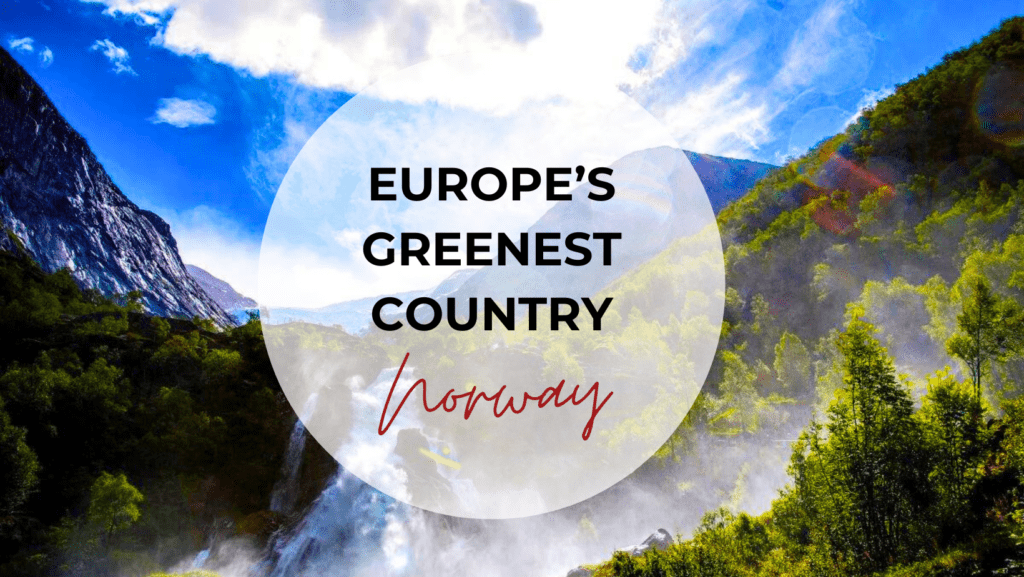In a groundbreaking study by solar experts Hemsol, Norway emerges as Europe’s greenest country, setting an impressive benchmark for sustainability. The study, which utilized data from the European Environment Agency, the Odyssee-Mure Project, and the Energy Institute, delves into various environmental factors to determine the top environmentally friendly nations in Europe.
Norway: A Green Pioneer Despite Challenges
Norway claims the coveted title of Europe’s greenest country with a remarkable score of 73.30 out of 100. Despite facing challenges such as high carbon dioxide emissions per capita and vast farmland areas, Norway stands out for its second-highest renewable energy share on the list.
The Norwegian government’s commitment to environmental sustainability extends globally. Through bilateral and multilateral partnerships, Norway pledges substantial financial support, dedicating up to 3 billion Norwegian Krone annually to preserve tropical forests and enhance the well-being of communities dependent on them.
Austria’s Eco-Friendly Transit Choices Propel It to Second Place
Austria secures the second spot on the list, driven by its citizens’ environmentally conscious choice of public transportation. Ranking first in passenger traffic on public transport in Europe, Austria displays a strong commitment to reducing its carbon footprint.
As a signatory of the Paris Agreement, Austria also excels in recycling rates, positioning itself as a frontrunner in eco-friendly practices. With a score of 68.89, Austria stands as a shining example of sustainable living.
Finland’s Ambitious Climate Act Propels It to Third Place
Finland clinches the third position, propelled by its recent enactment of a new Climate Act effective from July 1, 2022. The act establishes stringent emission reduction objectives for 2030 and 2050, with Finland targeting carbon neutrality by 2035.
The Finnish government’s commitment to long-term sustainability is evident in its ambitious targets, including a 60% reduction in emissions by 2030 and a goal of 90%, with an aspiration for 95%, by 2050. Finland’s dedication to environmental responsibility earns it a score of 62.31.
Iceland’s Low Carbon Emissions Secure Fourth Place
Iceland proudly claims the fourth spot on the list, boasting one of the lowest carbon dioxide emissions rates in the top 10. With a strong emphasis on renewable energy, Iceland aims for carbon neutrality before 2040, aligning its goals with the Paris Agreement.
To achieve these objectives, Iceland relies on a robust Climate Action Plan, updated in 2020, outlining 48 specific actions to reduce emissions and attain carbon neutrality. With a score of 62.13, Iceland is a testament to the power of strategic planning for sustainability.
Sweden’s Woodland Riches and Renewable Energy Use Place It Fifth
Sweden rounds up the top five greenest countries in Europe, leveraging its high rate of woodland area and the second-best share of renewable energy use. Sweden has set an ambitious target to eliminate net greenhouse gas emissions by 2045, emphasizing the urgency of addressing climate change.
With a score of 62.05, Sweden exemplifies the importance of balancing renewable energy sources and preserving natural habitats to achieve sustainability.
Northern European Dominance Reflects Commitment
William Bergmark, founder of Hemsol, emphasizes the dominance of Northern European countries in the top 10, with all Scandinavian nations securing positions in the top five. This underscores their unparalleled commitment to environmental causes, evident not only in data but also in practical regulations implemented both domestically and internationally.
Greenest Countries in Europe: The Top 10
Norway – 73.30
Austria – 68.89
Finland – 62.31
Iceland – 62.13
Sweden – 62.05
Estonia – 54.66
Germany – 52.06
Luxembourg – 51.83
Switzerland – 51.75
Slovenia – 51.63
Methodology: Unveiling the Green Index
Hemsol’s study utilized data from various sources, including the European Environment Agency, the Odyssee-Mure Project, and the Energy Institute. The methodology involved transforming environmental factors into standardized scores, considering aspects such as renewable energy share, recycling rates, public transport usage, woodland and farmland area, and carbon dioxide emissions per capita. The weighted scores were then summed to produce the final Green Index.
The unveiling of Europe’s greenest countries not only celebrates current achievements but also serves as a beacon for nations globally to intensify efforts towards a sustainable and eco-friendly future.
Sources:
Hemsol
European Environment Agency
Odyssee-Mure Project
Energy Institute
Did you enjoy this article?
Source link : https://theogm.com/2024/01/24/revealed-norway-tops-europes-greenest-list-austria-finland-follow-suit/
Author :
Publish date : 2024-01-24 03:00:00
Copyright for syndicated content belongs to the linked Source.
